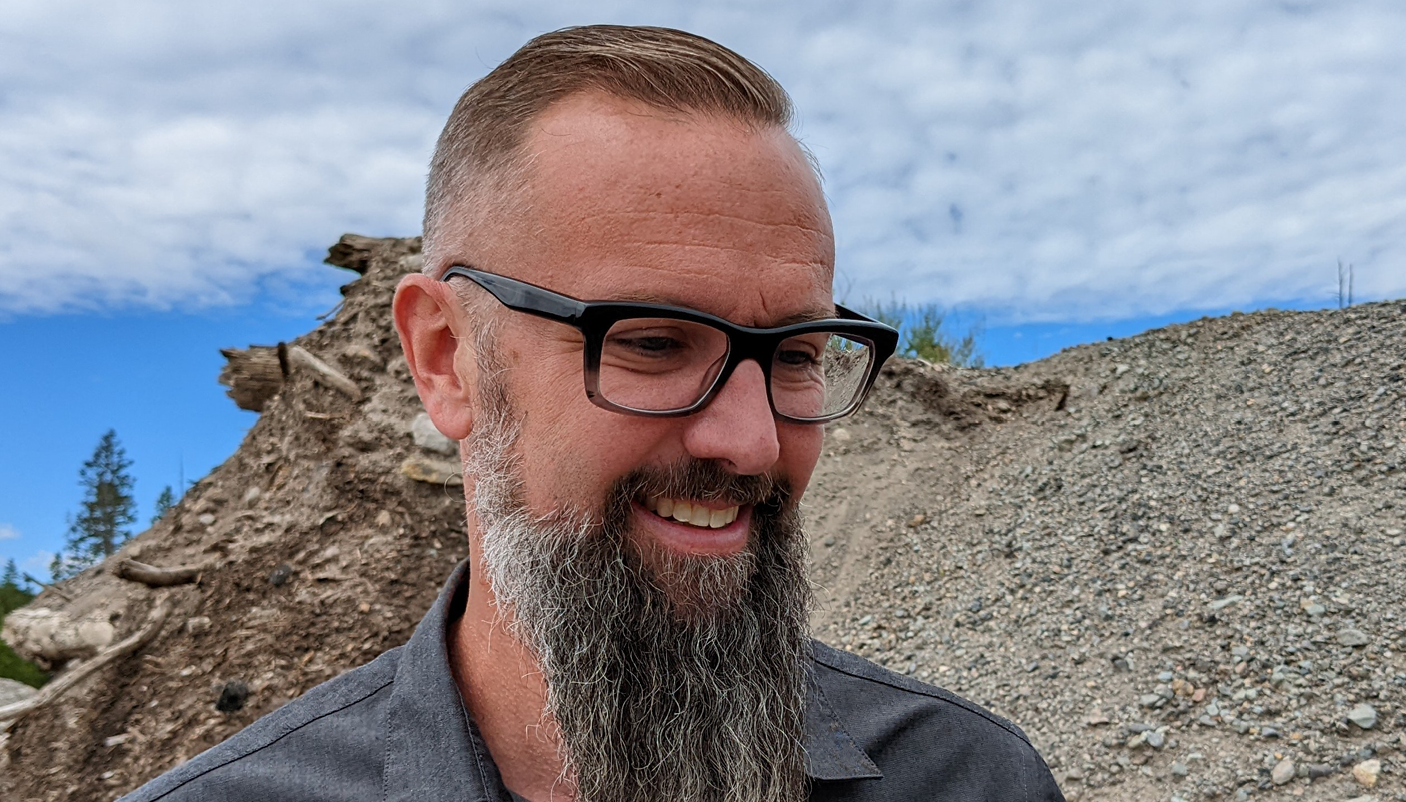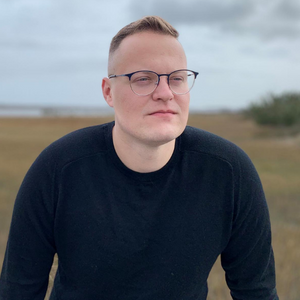Master of Resilient Urban Design
NOTE: The Master of Resilient Urban Design program is currently awaiting approval from the South Carolina Commission on Higher Education and the Southern Association of Colleges and Schools Commission on Colleges to formally close the program. Please contact Melissa Hoffman for more information on how this might impact your application. If you are a student who started coursework in Fall 2021 or later and have not been enrolled in the past year, please submit the Request for Re-Entrance per the Graduate School's Policies and Procedures by Friday, December 12, 2025.
Program Information
-
Vision Statement
The competitive advantage of the MRUD degree is explained in its four-fold vision:
1. A Trans-Disciplinary Program. Bringing together architecture, landscape architecture, city and regional planning, and preservation as well as the humanities and social and natural sciences in a spearheading configuration that exists in few places, the MRUD leads in strategically positioning cities to equitably thrive during growth under climate change by using trans-disciplinary expertise and methods.
2. Research-Based & Community-Based Design. In order to address the needs of a growing city and its ability to provide equity in and access to housing, food and water, energy, education, health care, revenue-generating activities, and affordable transportation, the MRUD degree integrates and applies research-based and community-based design thinking to tackle the growing need for innovation to manage change in metropolitan regions rather than waiting to react to the urban pressures that are inevitable.
3. An Innovation Lab. The MRUD program supports opportunities for faculty and students to pioneer research, develop new practices, and work closely with professionals to facilitate smart investment in the city. The program is an innovation lab using an integrated academic-professional model grounded in real-world projects in order to stimulate pioneering thinking and research in the Lowcountry that is applicable globally.
4. Managing Change. The MRUD reconceives the definition (and therefore application) of resilience from the reactive and static model of “bouncing back” to a previous state of equilibrium to a more dynamic notion that includes “springing forward” and recognition that the urban environment is dynamic and in flux, and managing change is perhaps a more critical skill to be acquired than stewarding the status quo. In doing so the degree focuses less on urban resilience as a status or a goal but rather on resilient urbanism and a set of tools and practices to be applied. -
Plan of Study
The MRUD is a 36-credit post-professional degree for graduates and professionals with prior design skills in architecture, landscape architecture, city and regionally planning. Those outside the design professionals are strongly encouraged to apply.
The degree emphasizes the four-part City Resilience Framework, which includes health and wellbeing; infrastructure and environment; economy and society; and leadership and strategy, as these influence urban design decision-making. Through its curriculum, the MRUD degree addresses how to steward change in rapidly growing metropolitan regions. It is an issues-based, teamwork model wherein students engage questions based on a design-thinking foundation and enhanced with methodologies from multiple disciplines.
Each of the three required semesters includes a 6-credit Urban Design Studio, a 3-credit Urban Design Seminar, and a 3-credit practicum course. The combination of design exercises, theory, field studies, and engagement with practitioners and communities maintains a fluid dialogue between theoretical knowledge, practice, and implementation.
All studios are applied projects tackling real problems in the Lowcountry; and, all studios address equity and climate change alongside the design of built form and public space. Visualization & Communication content includes instruction on GIS, Photoshop, Illustrator, In-Design, Rhino, making short films, Augmented Reality, Policy Map, Infographics, and more. These professional representation skills are leveraged in order to communicate with regular people.
In their final term students have the option to write a white paper or do an internship that helps them to situate their interests relative to the field. This, in combination with a portfolio, is meant to facilitate students’ transition to employment.
Fall
RUD 8600 Urban Design Studio 1
RUD 8610 Urban Design Seminar 1
RUD 8620 Visualization and Communication 1
RUD 8900* Urban Foundations
*This course is required only for those without design-degree backgrounds.
Spring
RUD 8630 Urban Design Studio 2
RUD 8640 Urban Design Seminar 2
RUD 8650 Visualization and Communications 2
Summer
RUD 8660 Urban Design Studio 3
RUD 8670 Urban Design Seminar 3
RUD 8680 Urban Design Implementation
Dual Degrees & Certificates
Students can receive concurrent MRUD/M.Arch or MRUD/MLA degrees. Students may apply to both programs simultaneously (completing both applications) or apply to one and, then, after matriculation apply to the other (while in this first year of study).
Current Clemson students already enrolled in a Graduate Program or applying to a Graduate Program may apply for the 15-credit RUD Certificate Program. The program is Fall only and takes place at the Clemson Design Center in Charleston. Successful completion of the RUD Certificate includes: RUD 8600, RUD 8610, RUD 8620, RUD 8900 -
Professional Partners and Employment
Students work closely with local professionals and organizations as part of their Resilient Urban Design education. Past and current partnerships include City of Charleston Design Division, City of Charleston Planning, City of North Charleston, Preservation & Sustainability, Thomas & Hutton, ULI SC, The Nature Conservancy, Biohabitats, Surculus, Charleston Moves, Robinson Design Engineers, Metanoia, DesignWorks, Charleston Resilience Network, Berkeley-Charleston-Dorchester Council of Governments, Preservation Society of Charleston and Historic Charleston Foundation.
In addition to having built environment professionals at reviews, community leaders are often present to include City Councilpersons and the Mayors of Charleston and North Charleston.
During their studies, students have found employment locally. Following graduation, students are employed both in the Lowcountry and around the nation in firms such as Robinson Design Engineers, Surculus, Ayers Saint Gross, LS3P, DesignWorks, Urban3, LandDesign, Smith Gee Studio, Gensler, Toole Design, Studio Ludo, Cowen Design Group, Goodwyn Mills Cawood (GMC), Remark, Myrtle Beach Downtown Alliance, National Security Agency, Berkeley County Government, Bowman, City of Charleston Design Division, City of Raleigh, Jamestown, and Engineers, Surveyors and Planners Associates (ESP).
-
Application Information
Priority application deadline is February 15; applicants who meet this priority deadline will also be considered for merit aid.
Rolling applications will be accepted until April 15.
Contact mrud@clemson.edu if you have questions about the application process.
DESIGN STUDENTS
A complete application will include a portfolio of creative work, prior degree transcripts, a statement of purpose, 2 letters of recommendation and TOEFL scores for international applicants. Please note a strong emphasis will be placed on the portfolio and statement of purpose.
NON-DESIGN STUDENTS
A complete application will include a research paper (preferably on an urban, ecological and/or social justice topic), prior degree transcripts, a statement of purpose, 2 letters of recommendation, and TOEFL scores for international applicants. Please note a strong emphasis will be placed on the research paper and statement of purpose. -
Financial Information
MRUD offers a limited number of fellowships based on the strength of their applications and their standing in the applicant pool. A limited number of student employee positions are also available wherein students work closely with MRUD faculty on research and/or community-based projects. The number of fellowships available is limited by the budget in a given year. The MRUD program does not offer financial aid. For financial aid, see the University's Financial Aid webpage.
Application Process and Timing
In order to be considered for fellowship or student employee positions, the priority deadline is February 15. Review of applications starts immediately after February 15 and decisions soon thereafter for that priority application poo. All decisions after that are on a rolling basis and based on available space in studio and/or budgetary funding.
Estimated Tuition
MRUD is one of Clemson’s Premiere Programs, therefore it does not distinguish between in-state and out-of-state; all students pay the same fee. For more details on estimated tuition and fees, see the University’s Tuition and Fee Calculator website.
https://www.clemson.edu/finance/student-financials/tuition-fees/index.html -
Charleston
Urban design is about local places and the City of Charleston is an extraordinary place for studying place and urban form. As one of America's oldest cities with a unique and well-preserved historic core, it is a globally important example of walkable urbanism. At the same time, as a growing mid-sized city, Charleston faces a number of complex urban design challenges that must balance social equity, historic preservation, environmental sensitivity and fragility, transportation, economic development, and investments in managing growth and change. With its unique combination of history, culture, tourism and expanding economic base, metropolitan growth, and sensitive coastal location, Charleston is a world-class living-learning-urban laboratory for examining contemporary urban design issues through a comprehensive approach to historical, cultural, social, economic, and environmental concerns. It is anticipated that graduates, coming to the program from the region, across the country, and around the world, will be able to apply lessons learned in Charleston to other environmentally, socially, and historically sensitive places, to other cities around the globe.
Located in Charleston at the Cigar Factory (a former cigar and textile manufacturing plant, built-in 1881 and listed on the National Register of Historic Places), the MRUD degree is part of the Clemson Design Center in Charleston (CDC.C). The CDC.C provides studio space, classrooms, seminar rooms, fabrication facilities, a laboratory, library, multipurpose space, and faculty and staff offices for the MRUD and other related programs, including the Master of Science in Historic Preservation. The CDC.C also houses the Clemson Architecture Center in Charleston (CAC.C), Architecture + CommunityBUILD studios, and an Architecture + Health studio providing one or two-semester options for Clemson’s degree-seeking undergraduate and graduate students in Architecture and Landscape Architecture. These disciplines, independently and in collaboration, are regularly and actively engaged in service-learning and research on local, "real world" issues, with strong relationships with local governments, other academic institutions, not-for-profit organizations, and industry. The MRUD program builds on the work and local relationships established with the founding of the Clemson Architecture Center in Charleston in 1988. Today, the combination of urban design, architecture, historic preservation, and landscape architecture in this location establishes Clemson University as a premier provider of allied academic and research offerings in design and building in the Southeast.
“During my time in MRUD, I was fortunate to receive a broad range of experiences. From designing temporary installations for community gatherings to sitting in on the Joe Riley Mayors' Design Fellowship, or participating in the Dutch Dialogues; I gained confidence in myself as a leader and designer. MRUD also gave me the opportunity to find employment as a research assistant, as well as intern at a local firm throughout my studies. The relationships I made in and through the program are probably some of my most valued. I made long-lasting friendships, mentorships, and greatly expanded my professional network while in the program. Currently, I work for LS3P in Charleston, SC. I am a member of the in-house research and design cohort, Ignite, as well as our newly established urban design practice. I get to utilize our newest design tools on a daily basis and implement my MRUD education in the real world. Resilience, coastal flooding, and transportation are major conversations happening, so MRUD has positioned me well to participate in an educated, meaningful way.”
Nicholas BilgriMaster of Resilient Urban DesignRichard A. McMahan School of Architecture
Bradford Watson
Interim Director of the Master of Resilient Urban Design Program
Email: bawatso@clemson.edu



